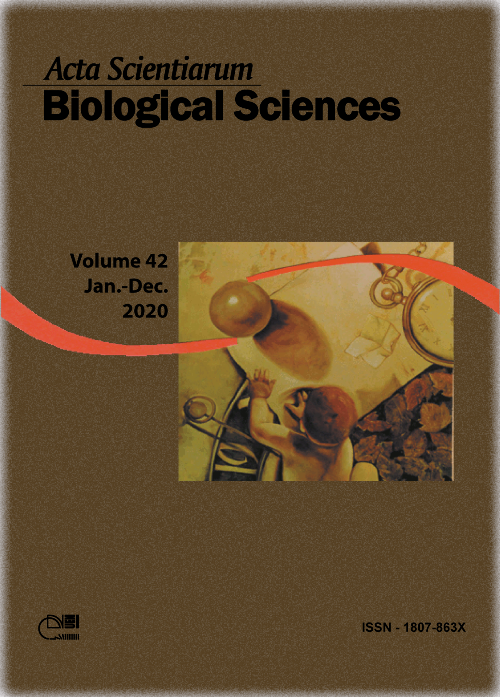The sex ratio of the koinobiont parasitoid Microcharops anticarsiae Gupta remains female-biased on young larvae of velvetbean in the laboratory environment
Resumo
The natural parasitic behavior of parasitoids should be known by those in charge of planning strategies for the biological control of pests; therefore, the aim of the present study was to determine the larval instar of Anticarsia gemmatalis Hübner parasitized by Microcharops anticarsiae Gupta in the field and the implication of such parasitic behavior in the sex ratio in the laboratory environment. The length of each larval instar of A. gemmatalis parasitized by M. anticarsiae in the field was determined, and the egg-to-pupa period of the parasitoid and its larval instar lengths were plotted in Gantt charts. According to the chart, A. gemmatalis was parasitized at the first (15%) and second (85%) larval instars in the field, but the length of the first, second and third larval instars of this species was not affected by the parasitism by M. anticarsiae in the field; however, its fourth larval instar was extended and the fifth one was shortened in 2015 but not affected in 2016. The sex ratio of A. gemmatalis larvae parasitized by M. anticarsiae in the field was female-biased, and the sex ratio of early parasitized larvae (3-day old) in the laboratory environment was also female-biased for three cultivated generations. The ‘generation’ factor has affected the egg-to-pupa, pupal and egg-to-adult periods of M. anticarsiae, since females pupated earlier than males in the egg-to-pupa period. Based on the results, M. anticarsiae mostly parasitized the second larval instar of A. gemmatalis in the field, and parasitism in 3-day old larvae in the laboratory environment produced female-biased sex ratio in M. anticarsiae, regardless of the generation.
Downloads
DECLARAÇÃO DE ORIGINALIDADE E DIREITOS AUTORAIS
Declaro que o presente artigo é original, não tendo sido submetido à publicação em qualquer outro periódico nacional ou internacional, quer seja em parte ou em sua totalidade.
Os direitos autorais pertencem exclusivamente aos autores. Os direitos de licenciamento utilizados pelo periódico é a licença Creative Commons Attribution 4.0 (CC BY 4.0): são permitidos o compartilhamento (cópia e distribuição do material em qualqer meio ou formato) e adaptação (remix, transformação e criação de material a partir do conteúdo assim licenciado para quaisquer fins, inclusive comerciais.
Recomenda-se a leitura desse link para maiores informações sobre o tema: fornecimento de créditos e referências de forma correta, entre outros detalhes cruciais para uso adequado do material licenciado.












1.png)




3.png)













